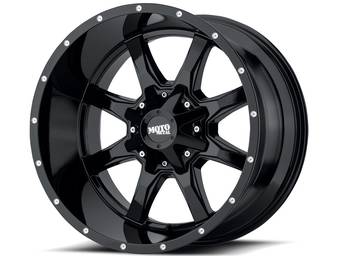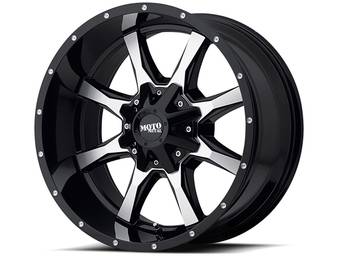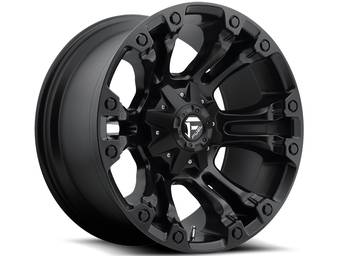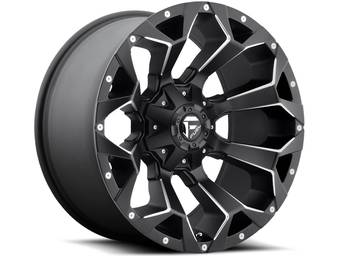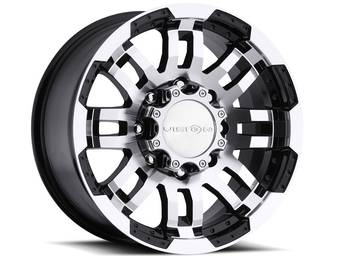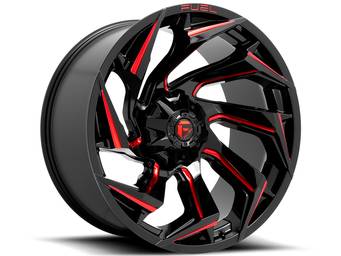Wheel Offset vs Wheel Backspacing
Originally published on Jun 13, 2019 | Updated on Sep 5, 2023
Wheel Offset Vs. Wheel Backspacing
Are you looking to buy new wheels for your truck, Jeep, or SUV? Aside from the standard measurements of diameter, width, and bolt circle, there are a few other values you should be familiar with. Of course, I'm referring to a wheel’s offset and backspacing–two values directly correlating to fitment.
You’ve likely heard these two terms before, or at the least, have read them on the spec sheets of your favorite wheel manufacturers and retailers, like RealTruck. However, without the proper knowledge, these values are nothing more than a jumbled mess of numbers! That’s why, in this article, we’re detailing the ins and outs of backspacing and offset, including what these two values measure, the units of measurement used, how each is calculated, and how exactly they differ from one another. And by the end of this article, you’ll be a wheel fitment expert!
Now, let’s get rolling!
Wheel Offset
To begin, let’s cover wheel offset. This value is commonly seen when shopping for aftermarket wheels and presents as a positive or negative value, such as +0 or -44.
What Is Offset?
Wheel offset refers to the distance of a wheel’s mounting flange, or the flat portion of the wheel that fits against your vehicle’s hub, from the wheel’s centerline measured in millimeters. For example, if a wheel is eight inches wide and carries a +0mm offset, that means that the mounting flange of the wheel is positioned at the exact centerline of the wheel, with four inches to the front and four inches to the rear.
Positive Vs. Negative Offset
As previously mentioned, a wheel's offset can either be positive or negative, depending on which direction the mounting flange deviates from the wheel’s centerline. Positive offset refers to a wheel in which the mounting flange is pushed closer toward the outer lip, resulting in a recessed, sunken-in appearance. Inversely, negative offset refers to the mounting flange positioned further inward from the wheel’s centerline, thus prompting the wheel to protrude further from the body.
Most factory wheels feature a high offset, such as a +45, which keeps the wheel tucked tightly against the body and prevents water, mud, and kicked-up debris from splashing along the body and onto other drivers. However, most aftermarket wheels feature far lower offsets, which push the wheel further outward for a “flush” appearance, in which the wheel is practically aligned with the upper edge of the fender, or “poke,” in which the wheel protrudes further past the fender.
Wheel Backspacing
With a basic understanding of offset under our belts, let’s get into our next value: backspacing.
What Is Backspacing?
Backspacing is a similar measurement, though not calculated in the same fashion or with the same units of measurement. This numerical value describes the distance of the mounting flange from the rear lip of the wheel in inches. Returning to the example above, in which a wheel is eight inches wide with a +0mm offset, the resulting backspacing is simply the wheel’s width divided by two, considering that the mounting flange falls directly in the wheel’s centerline, in the case of this example, our imaginary wheel has a backspacing of four inches.
In most cases, it’s best to order aftermarket wheels with backspacing similar to your vehicle’s factory wheels to prevent contact with suspension components, brake lines, etc.
Backspacing & Fitment
Backspacing alone doesn’t necessarily inform fitment; instead, the relation of a wheel’s width and its backspacing do.
Typically, the less backspacing, the further a wheel sticks outwards; for example, a wheel with an eight-inch width and four-inch backspacing will sit further recessed than an eight-inch wide wheel with a three-inch backspacing. Alternatively, a ten-inch wide wheel with a four-inch backspacing will stick out significantly further than an eight-inch wheel with a four-inch backspacing, considering the distance from the mounting flange to the outer lip has grown by two inches!

Offset Vs. Backspacing
So, what are the key differences between these values? For starters, both are measured in different units, with backspacing using inches and offset using millimeters. Additionally, offset utilizes negative values, whereas backspacing sticks to positives.
With these surface-level differences aside, we can view the two measurements in relation to one another rather than focus on their differences. With other values defined, like a wheel’s width, these two measurements essentially determine the same thing: the position of the wheel’s mounting flange; only offset measures this value according to the wheel’s centerline, and backspacing measures this value according to the wheel’s rear lip.
You can also use these values to determine one another; for instance, if we know that a nine-inch-wide wheel has a +25MM offset (1”), then we know that the mounting flange is pushed one inch towards the outer face of the wheel. To determine the backspacing, simply divide the wheel’s width by two and add or subtract the offset. In this case, we’d perform 9/2+1, granting us a backspacing of 5.5 inches!
Alternatively, If we know the backspacing and width of the same wheel, we can perform a similar equation to grant us the offset. In this example, divide the width by two, and subtract the resulting value from the backspacing. In this case, we’d perform 5.5 - (9/2), granting us an offset of 1 inch, or +25mm.
So what have we learned? Let’s look at a few key takeaways:
Backspacing is the distance of a wheel’s mounting flange to the rear lip in inches
Offset is the distance off-center of a wheel's mounting flange in millimeters
Both values accomplish essentially the same measurement in different ways (the position of a wheel’s mounting flange)
Both values are related, but not identical
Offset can present in positive or negative values
Backspacing only presents as positive values
Both values help to determine the position of a wheel in relation to your vehicle’s body
If you have any additional questions, feel free to contact our qualified sales staff, or check out our video tutorials!
Shop Now
RealTruck is your home for the best products to outfit your build for unforgettable adventures.
Shop Top Wheels & Rims
See More Wheel & Tires Articles Here...
- …
Join over 2 million RealTruck people
Get exclusive savings, insider information, and the latest RealTruck articles sent straight to your inbox.
